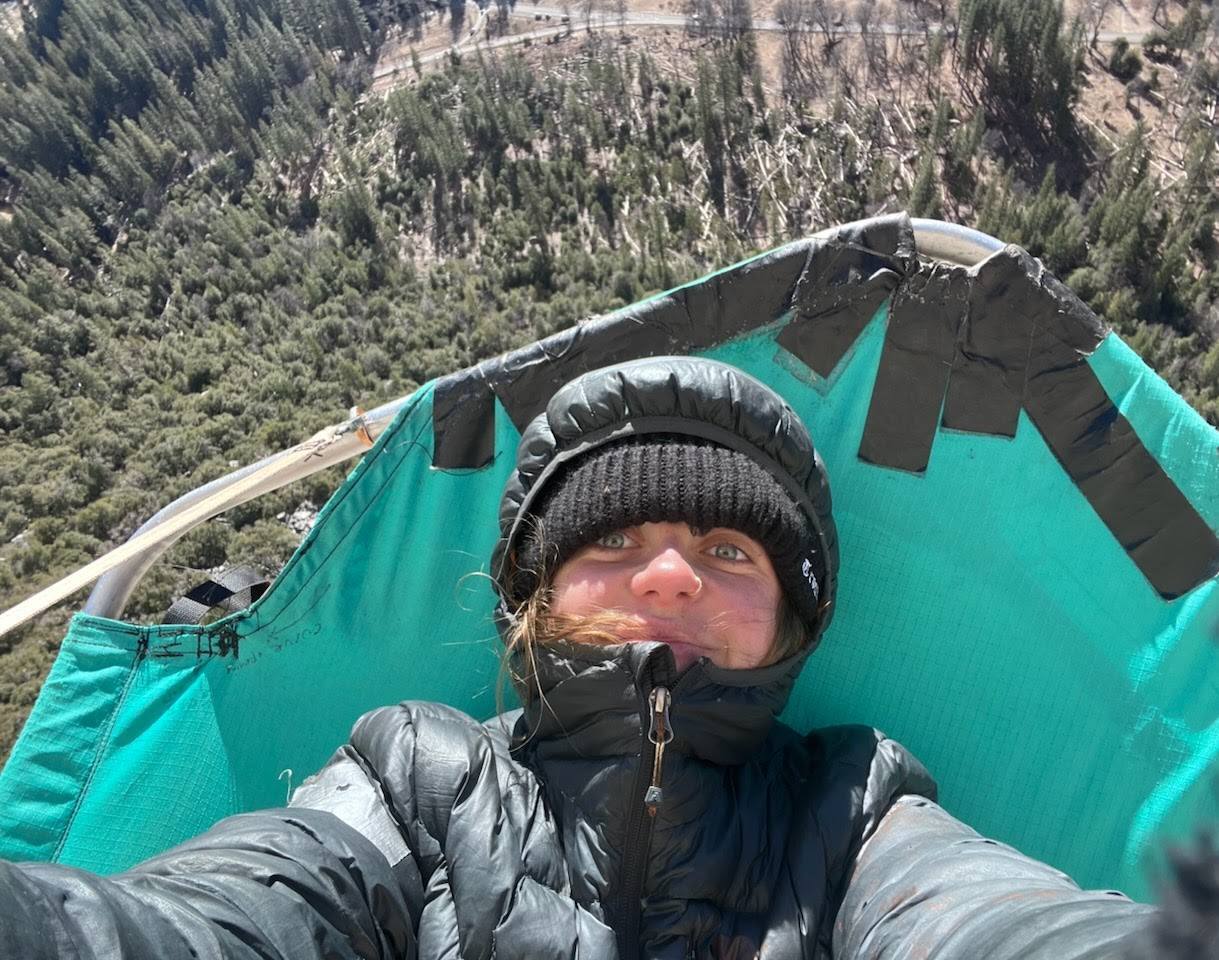Setting Sites, Achieving Goals
Autumn Banks Scales El Capitan, Yosemite

Autumn getting ready to rest on her port-a-ledge
Loop community resident Autumn Banks climbed El Capitan in Yosemite, a 3000 ft. rock climbing adventure in 6 days. We hope you enjoy her journey!
"We started with what we call a “Day 0,” in which one of my partners and I climbed up the first 4 pitches. A pitch is a rope length long and is how big climbs like El Capitan are broken down. Each pitch has a grade to determine the difficulty, and those grades can be seen via online “Topo”. We went up the first 4 pitches to Sickle Ledge. This is the first main ledge on the nose route. From there, we rappelled to the ground, leaving fixed ropes above us so we could ascend those ropes and get straight to Sickle Ledge the next day. That night, we packed up our haul bags with sleeping gear, climbing gear, and all the water and food we would need for the next week.
My friends and I woke up early on Day 1 and ascended up our fixed lines, hauling our bags behind us. Hauling is a big wall nightmare and by far the hardest and worst thing about going up into the vertical world. After each pitch, you and your partner(s) have to set up a sort of pulley system to drag up your hundreds of pounds of gear behind you, as if the climbing isn’t tiring enough. When Big Walling in a team of 3, one person leads the climb, sets up 3 ropes at the established anchor, and then starts the haul. While they are starting the hauling, the second person ascends and clears all the gear placed by the leader to protect themselves from a potential fall. The last person ascends the rope while helping the haul bags over any bumps and snags that may occur.
Up at the anchor, everything is organized, and the next person gets ready to lead the next pitch, starting that system over again. 31 pitches later, you are at the top of El Cap!
I am so lucky that I got to climb with 2 other women, making this an all-female ascent. We spent 5 nights up on the wall. Most of the time, we slept on port-a-ledges, which were like hanging cots over the side of the wall. These took a bit of getting used to, but the whole time you are sleeping you're clipped in via your harness. If the ledge fails (very unlikely), you are still connected to the wall and safe. Two of the nights we slept on actual ledges on the rock. These were always a treat; we had the ability to walk around, do yoga, and not have to deal with the hassle of setting up and taking down the port-a-ledges.
We made our way up the wall, playing music, laughing, going delirious with just how exhausted and tired we were, but overall having the time of our lives. Of course, it was not all fun, and there were times when I wanted nothing more than to be back down on the valley floor, getting a full night of sleep, eating real food, and getting to use an actual toilet. It all comes in waves. We call is “Type 2 fun”. This is when something is more fun remembering it than when it was actually happening. Laughing at how miserable I was on our last night is a prime example of "Type 2 fun".
On the 24th of January I made my way up to the top of El Cap. 3,000 ft. above the valley floor, achieving a goal that has driven me for so long. I feel so fortunate to have had the opportunity to live and breathe climbing for 7 days, pushing myself mentally and physically, and doing things that I once considered impossible.
It really is a magical thing to come across something difficult, to put all your effort into it, to feel like there is no way you can keep going, and then to push further, even beyond what you thought was possible, and show yourself that you are capable of so much more. Climbing El Cap was such an honor, and I can’t wait for the next time I get to climb that beautiful piece of granite! In the meantime, I’ll be climbing other walls around Yosemite."